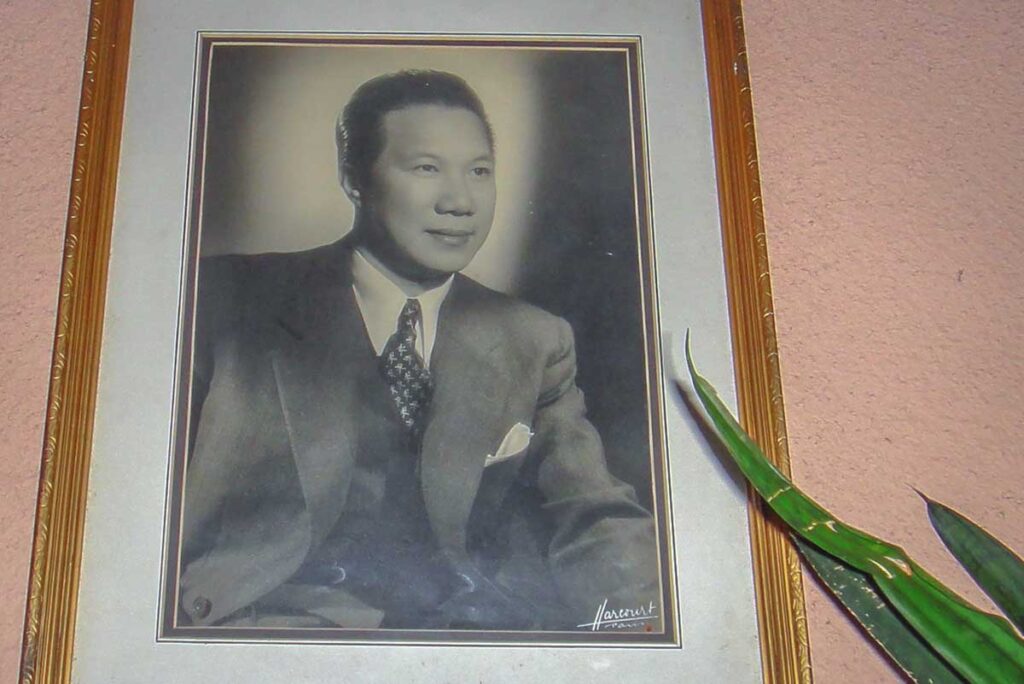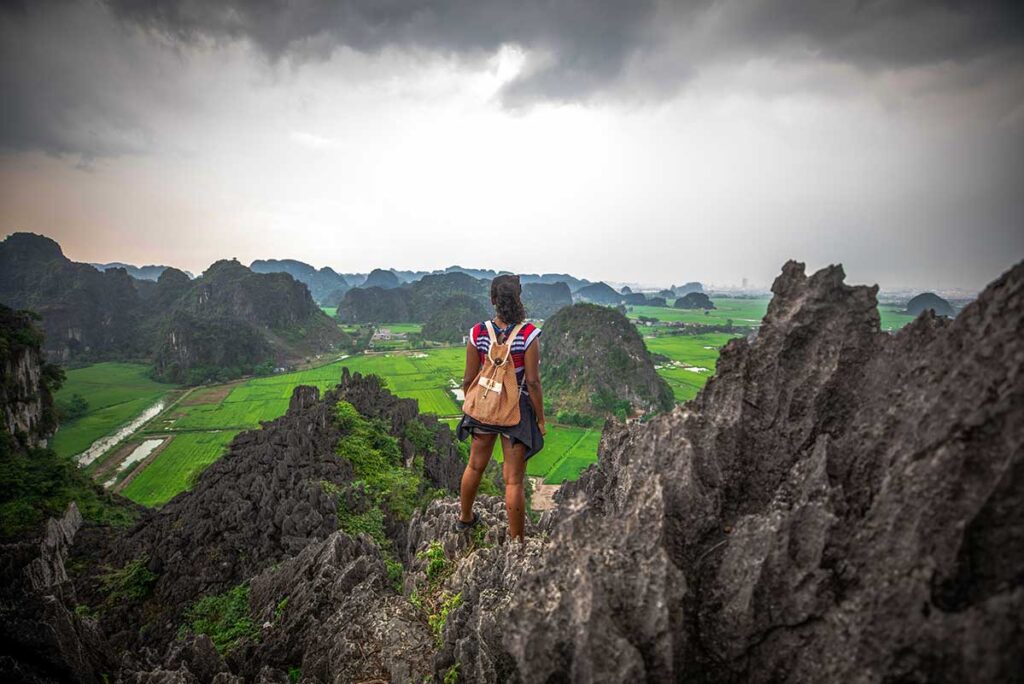Who was Bao Dai?
Bao Dai was the last emperor of the Nguyen Dynasty, Vietnam’s final royal line. He officially reigned from 1926 until his abdication in 1945, though real power during much of that period rested with the French colonial authorities and, later, the Japanese.
After stepping down in favor of Ho Chi Minh and the Viet Minh, he briefly returned as Chief of State of South Vietnam between 1949 and 1955, before being pushed into permanent exile in France. Today he is remembered as a symbolic figure who stood at the crossroads of colonialism, independence, and war—seen by some as a reluctant ruler caught in impossible circumstances, and by others as a controversial “playboy emperor” more interested in leisure and luxury than politics.
Vietnam at the time of Emperor Bao Dai
When Bao Dai came to the throne in 1926, Vietnam was already deep under French colonial control. The country had been carved into three parts: Tonkin in the north and Annam in the center were protectorates with limited imperial presence, while Cochinchina in the south was ruled directly as a French colony. The Nguyen emperors, including Bao Dai, held little real power and were often caught between tradition and the growing influence of French culture, education, and politics.
This balance shifted dramatically during World War II, when Japan moved in and sidelined the French. In the chaos that followed, new independence movements gained strength—most notably the Viet Minh, who would go on to reshape Vietnam’s future. Bao Dai’s reign unfolded during this turbulent moment, when colonialism, foreign occupation, and the push for independence collided, leaving him more a figurehead of transition than a ruler in control.
Key events in Bao Dai’s life
Early life and education
Bao Dai was born in 1913 in Hue, the imperial capital, as the only son of Emperor Khai Dinh. Unlike most Vietnamese of his generation, he grew up immersed in French culture. Sent to France as a boy, he studied at prestigious schools in Paris and returned with a Westernized worldview that shaped his personal life and his often-criticized detachment from Vietnamese traditions.
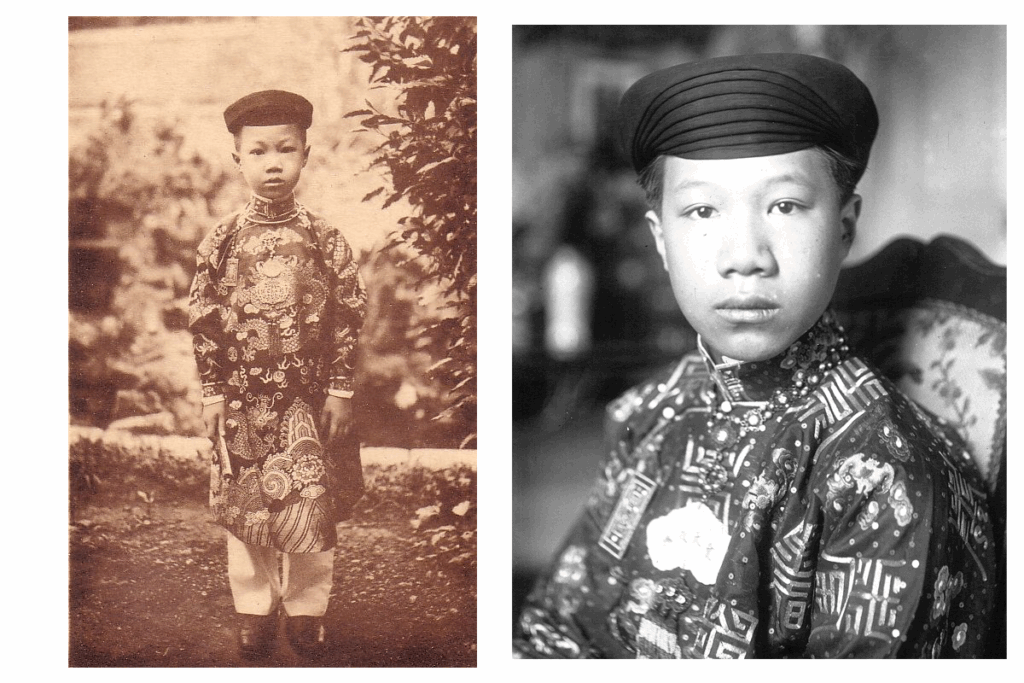
Becoming Emperor (1926–1932)
After his father’s death in 1926, Bao Dai was declared emperor at just 13 years old. However, he remained in France to complete his education and only formally assumed his duties in Hue in 1932. By that time, the French controlled almost every aspect of governance, leaving him little more than a ceremonial figure within his own country.
Marriage and Family
In 1934, Bao Dai married Nam Phương, a Catholic from a wealthy southern family, in a lavish ceremony in Hue. Together they had five children, though Bao Dai’s reputation was shaped as much by his mistresses and affairs as by his role as a family man. Nam Phương, who carried the rare title of empress, is remembered as a dignified figure who tried to balance tradition with modernity, often overshadowed by her husband’s scandals.
WWII and Japanese Occupation (1940–1945)
World War II brought further upheaval. With France weakened, Japan occupied Vietnam but allowed Bao Dai to remain on the throne. In 1945, under Japanese pressure, he declared the “Empire of Vietnam.” His rule during this short-lived state was largely symbolic, as events quickly overtook him.
Abdication in 1945
When Japan surrendered, the Viet Minh seized power. Bao Dai abdicated in August 1945, handing over the imperial seal and sword to representatives of Ho Chi Minh. His statement—“I would rather be a citizen of an independent country than emperor of an enslaved one”—became one of the most quoted lines of his career. For a brief time, he served as “supreme advisor” to the new Democratic Republic of Vietnam.
Return as Head of State (1949–1955)
By the late 1940s, Bao Dai was persuaded by the French to return as Chief of State of the newly created “State of Vietnam.” While nominally independent, the arrangement left France in control of defense and foreign affairs. Bao Dai spent more time in Dalat, Nha Trang, or the resorts of France than in Saigon, reinforcing his image as a disengaged “playboy emperor” with little political will.
Ouster in 1955
In 1955, his prime minister, Ngô Đình Diệm, organized a referendum to abolish the monarchy. The vote, widely considered rigged, showed overwhelming support for a republic. Bao Dai was deposed and sent into permanent exile, never to return to power in Vietnam.
Life in exile & Death
Bao Dai lived most of his remaining years in France and Monaco, far removed from Vietnam’s wars and politics. He converted to Catholicism in the 1980s and lived a relatively quiet life until his death in Paris in 1997. He was buried in the Cimetière de Passy, closing the chapter on Vietnam’s imperial era.
Bao Dai in Vietnam today
Although Bao Dai’s political legacy is debated, many of the places connected to him remain part of Vietnam’s cultural and tourist landscape. Visiting these sites offers a glimpse into both the fading world of Vietnam’s last emperors and the French colonial influence that shaped his era.
Imperial Citadel of Hue
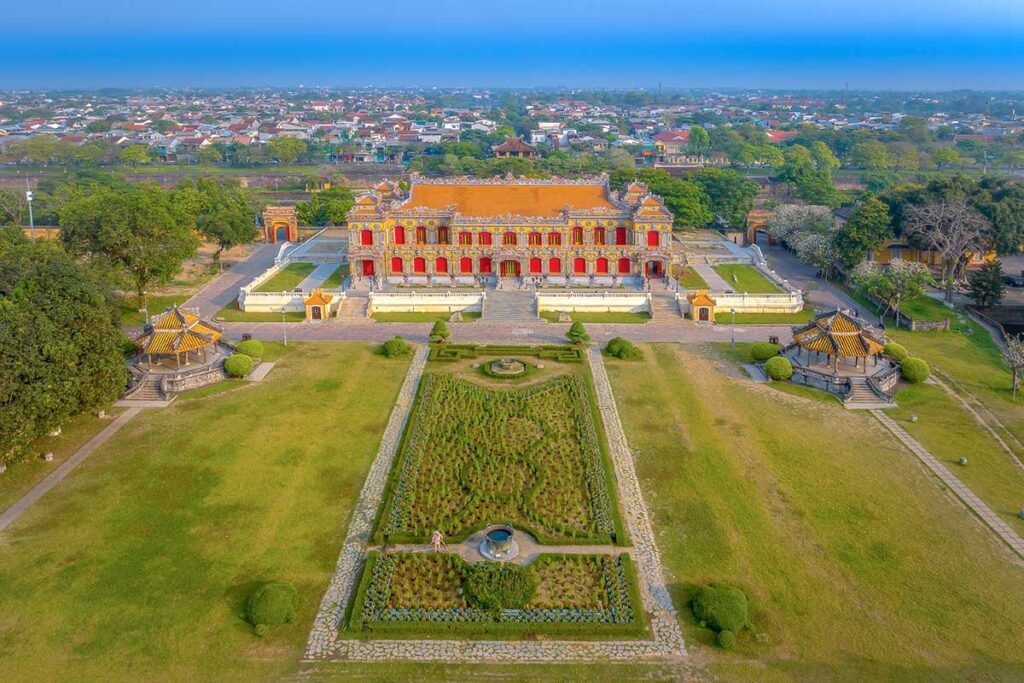
The Imperial Citadel in Hue was the stage for Bao Dai’s lavish wedding to Nam Phương in 1934, one of the last great ceremonies of the Nguyen Dynasty. Today, much of the complex is restored and open to visitors. Walking through the gates and halls gives a sense of the dynasty’s final chapter, with Bao Dai’s story woven into the broader history of Hue’s royal court.
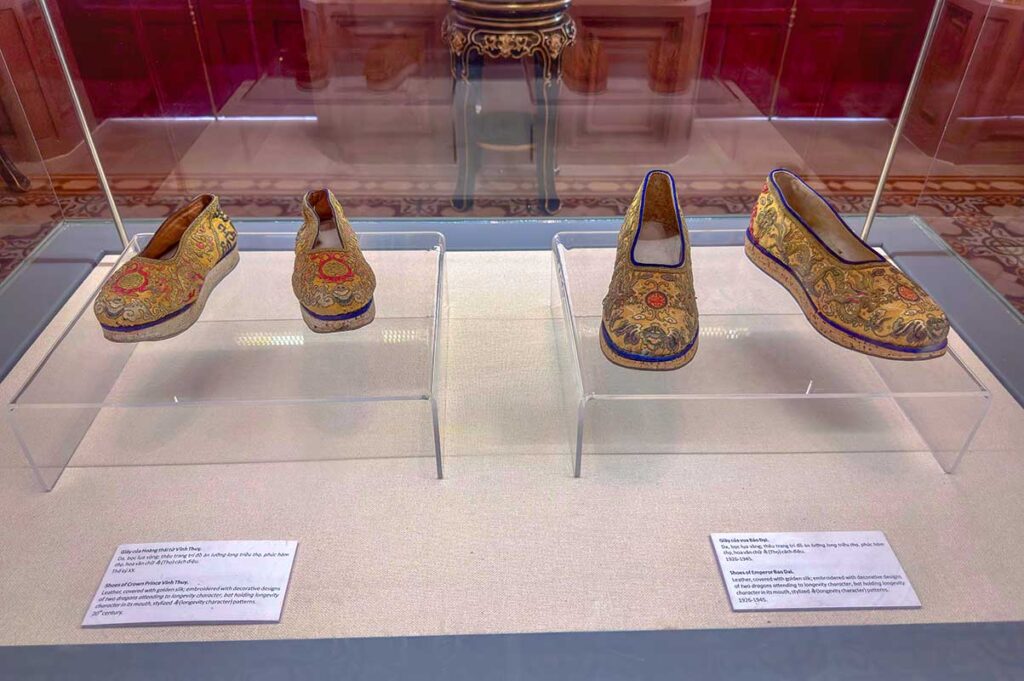
An Dinh Palace, Hue
An Dinh Palace was originally built by Bao Dai’s father, but it became closely tied to Bao Dai and his family life. The palace’s architecture mixes Vietnamese and French styles, reflecting the hybrid world Bao Dai grew up in.
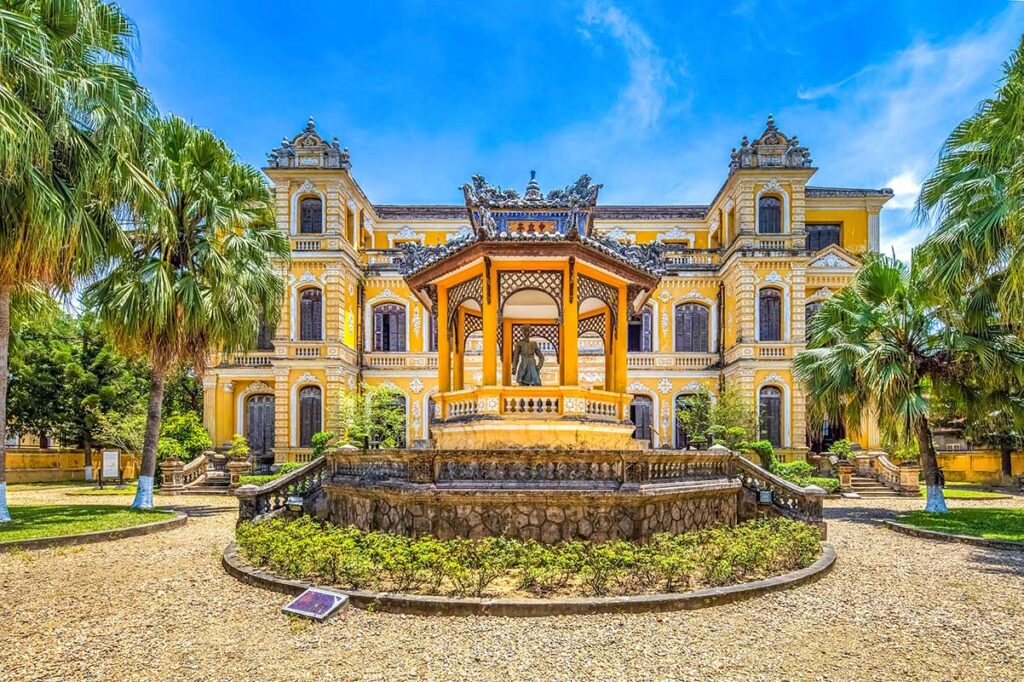
Inside, exhibitions of old photos and furnishings show the emperor, empress, and their children in both formal and everyday settings. It’s a smaller, less crowded alternative to the main citadel, and worth a stop for those interested in the Nguyen family’s personal world.
Bao Dai’s Summer Palace (Palace III), Dalat
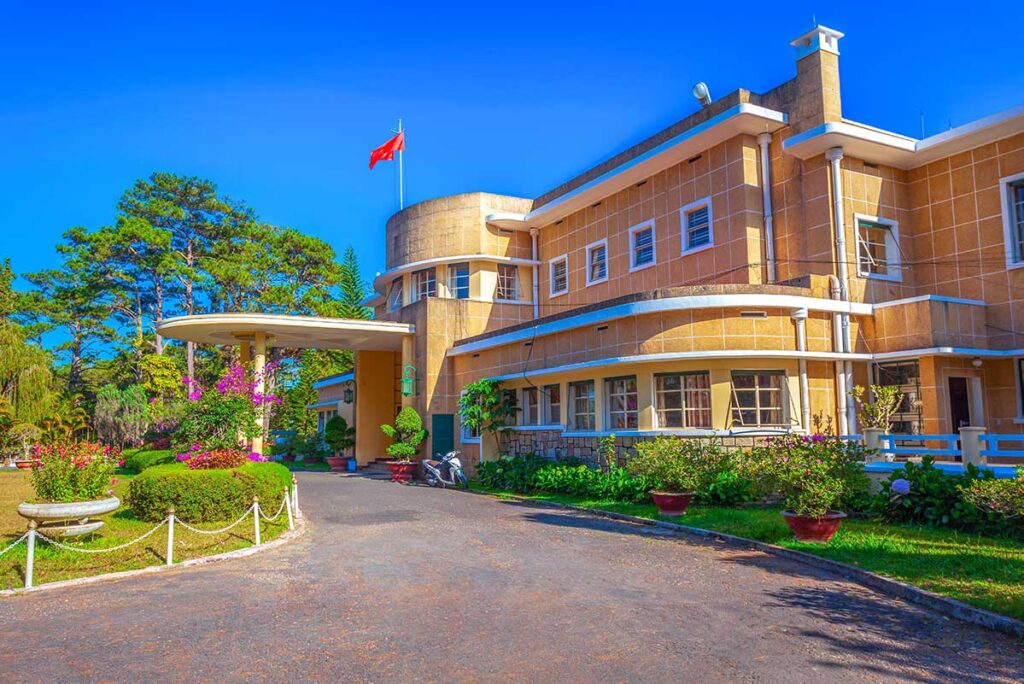
In Dalat, Bao Dai built his own retreat in the 1930s. This art deco villa, known as Palace III, is preserved as a museum with much of its original furniture, hunting trophies, and personal belongings. It offers a rare, tangible glimpse into Bao Dai’s lifestyle—part royal residence, part hunting lodge, and part European-inspired retreat.
Dalat Palace Hotel
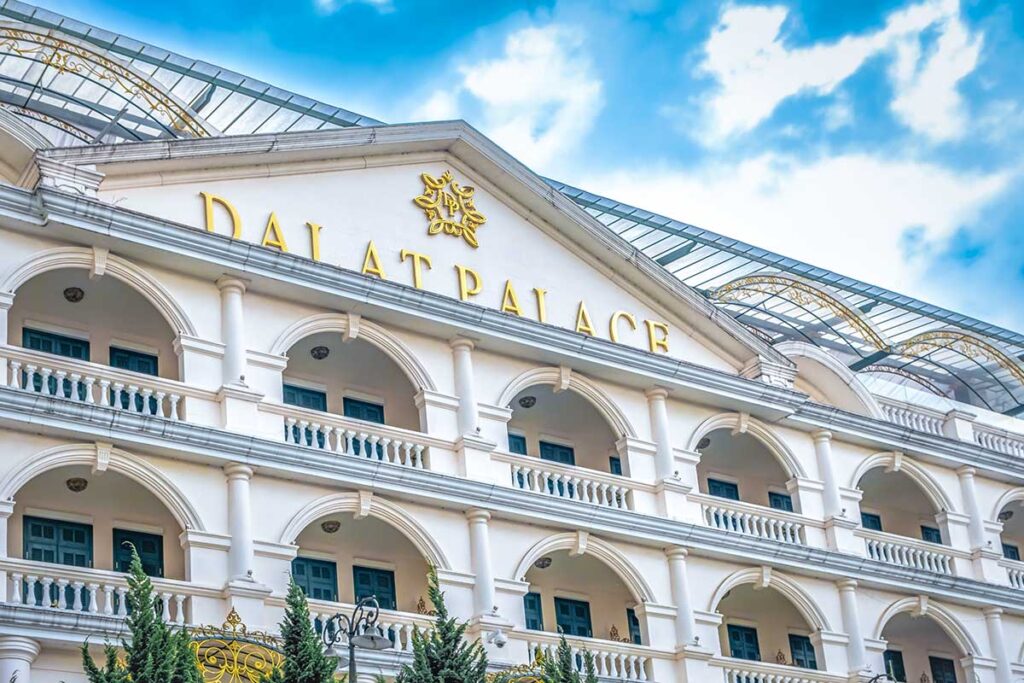
A landmark of French Indochina luxury, the Dalat Palace Hotel was where Bao Dai and Nam Phương often spent time together before and after their marriage. Though heavily renovated, the hotel still carries its colonial charm and remains one of the city’s most historic places to stay. For travelers, it’s more about atmosphere than historical exhibits, but knowing Bao Dai’s connection adds context to a stay or even a short visit for coffee.
Bao Dai’s Villas in Nha Trang & Buon Ma Thuot
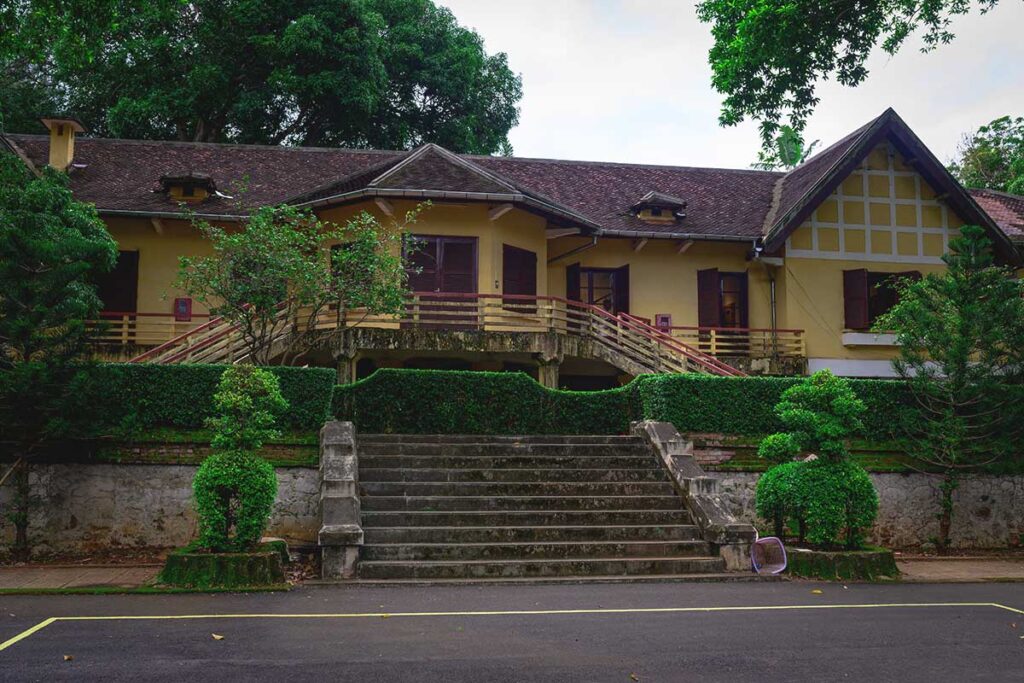
Bao Dai had several villas across Vietnam, particularly in Nha Trang and a villa in Buon Ma Thuot, used as hunting retreats or seaside escapes. Some are open to visitors today, though upkeep and presentation vary. These sites aren’t polished museums but do give an authentic feel of his leisure lifestyle and the French-era architecture he favored.
Bao Dai Waterfall (Dalat area)
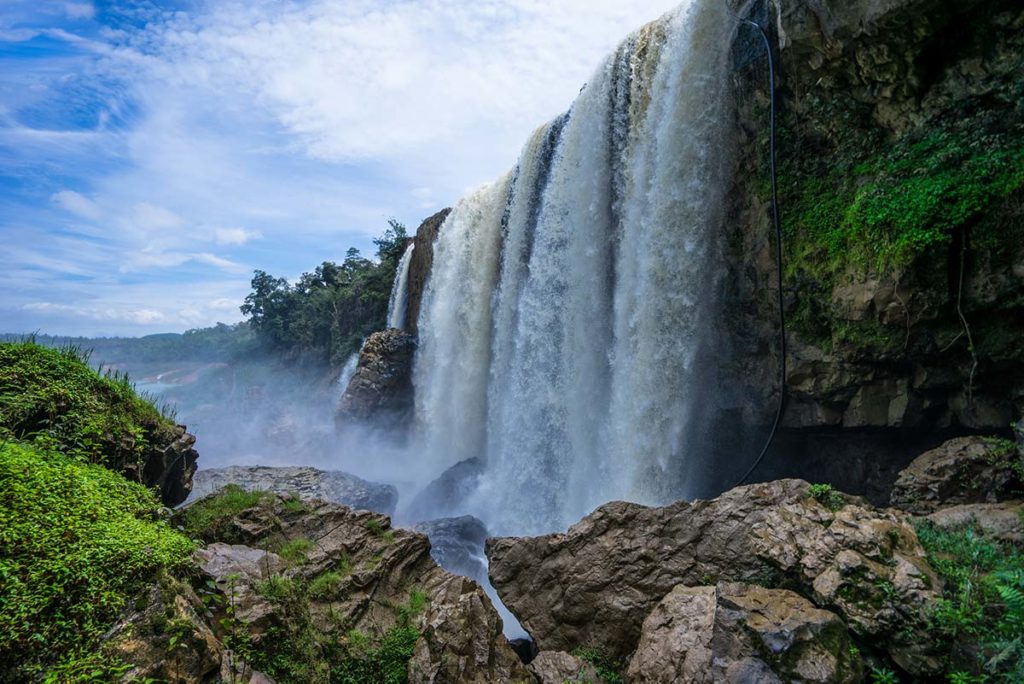
Named after the emperor, the Bao Dai Waterfall in the Dalat highlands was a stop on his hunting trips. While it doesn’t have much in the way of historical signage, it’s a scenic natural spot that carries his name into the present. For travelers, it’s more of a local excursion than a major historical site, but the connection adds a layer of interest.
Museums, Streets, Cultural Traces
Bao Dai’s name and image also survive in smaller ways. Old coins and notes bearing his era’s marks occasionally appear in museums or private collections. A few streets and schools still carry his name, though without much fanfare. Even luxury collectors outside Vietnam associate him with one of the world’s most expensive Rolex watches, once his personal possession. These traces show how his life continues to surface in unexpected corners of culture and history.
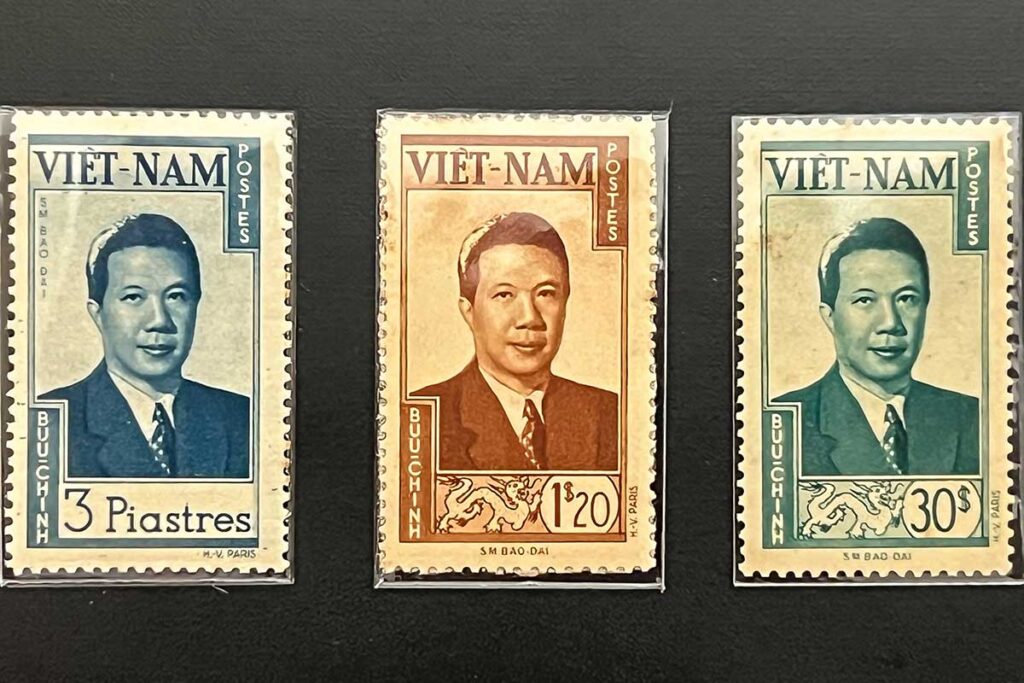
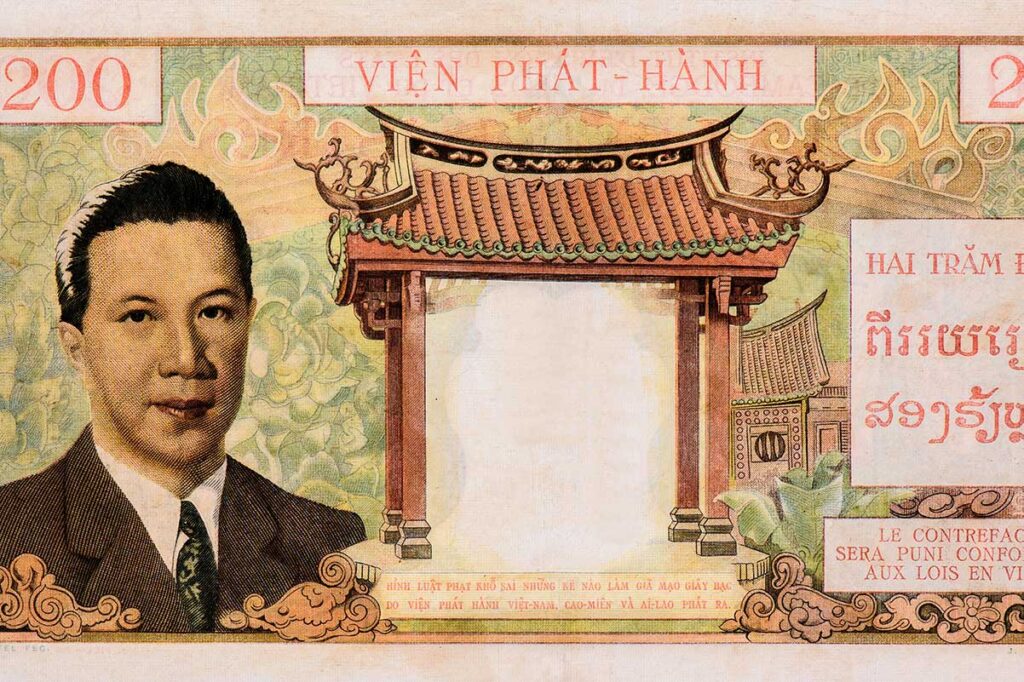
Other famous Emperors of Vietnam
Bao Dai’s story makes the most sense when seen alongside other rulers who left a clearer mark on Vietnamese history. Here are some of the most notable emperors and figures to know about:
- Lý Thái Tổ (974–1028) – Founder of the Lý dynasty and the one who moved the capital to Hanoi in 1010, laying the foundations of Vietnam’s political and cultural heart.
- Trần Hưng Đạo (1228–1300) – Technically a prince rather than an emperor, but celebrated as a national hero for leading Vietnam’s victories over three Mongol invasions.
- Lê Lợi (1384–1433) – Leader of the Lam Sơn uprising against the Ming Chinese occupation and founder of the Later Lê dynasty, which went on to be one of Vietnam’s most enduring.
- Gia Long (1762–1820) – Founder of the Nguyễn dynasty, he reunified Vietnam after centuries of division and established the imperial capital in Hue.
- Minh Mạng (1791–1841) – One of the most influential Nguyễn emperors, remembered for administrative reforms, territorial expansion, and consolidating royal power.
- Tự Đức (1829–1883) – The last Nguyễn emperor with real authority before French colonial domination reduced the dynasty to symbolic status.
